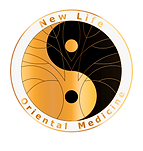
The symptoms that manifest as a disease are the reflection of the imbalance of Yin and Yang within the body.
Another main concept is the 'Qi,' pronounced 'chee.' Mostly translated as 'energy,' it is better understood as 'Life Force or Vital Force,' the one that allows us to exist. There are different types and densities of Qi in the body, each with its own organ (Zang) or viscera (Fu) associated and with a specific function. External or internal pathogens affect the Qi of the Zang Fu, which manifests as symptoms or disease.
The goal of Chinese medicine is to regain Yin Yang balance and smooth the free flow of Qi within the body to prevent disease, promote wellness, and restore health.
Chinese Medicine
As Western medicine dates back to approximately 460–370 BC with Hippocrates of Kos considered the 'Father of Medicine', so does Chinese medicine (CM) have its representation in 'The Yellow Emperor's Classic of Medicine' (Huang ti nei ching) circa 221 BC. Since then, CM has maintained its representation of human life as a micro-cosmos within the cosmos, affected by external changes—seasonal or geographic—as well as by internal changes that occur as responses to our emotions.
The basic principle in CM is Yin and Yang, two opposite but mutually dependent and integrated forces from the creation of the universe, and both form the basis of every living thing and object. All natural phenomena in the universe depend on the dynamic balance of these two forces, and we, as human beings sharing the same elements as the universe, are subject to its rules.

